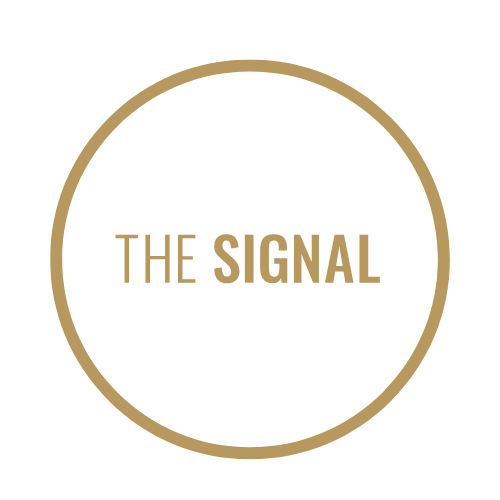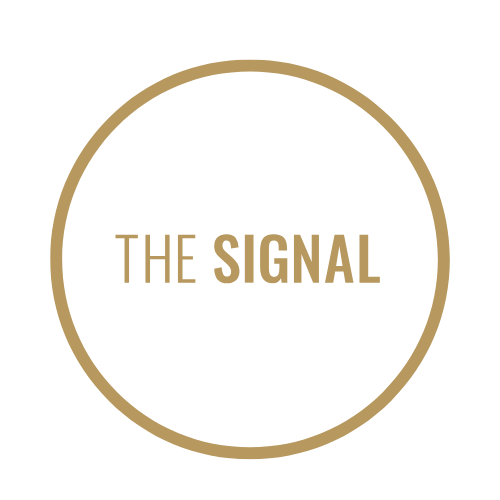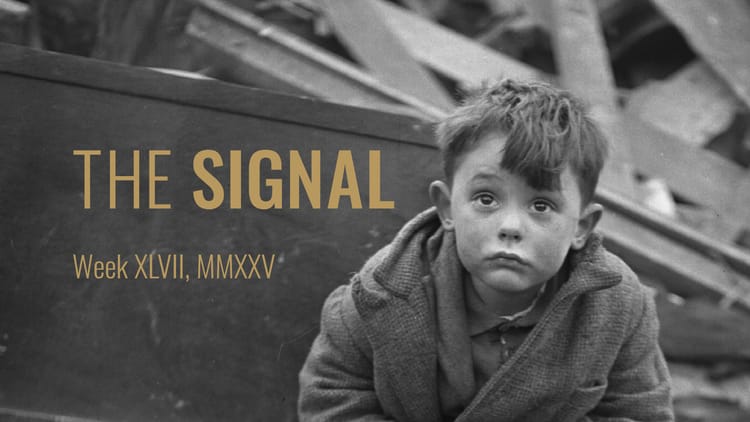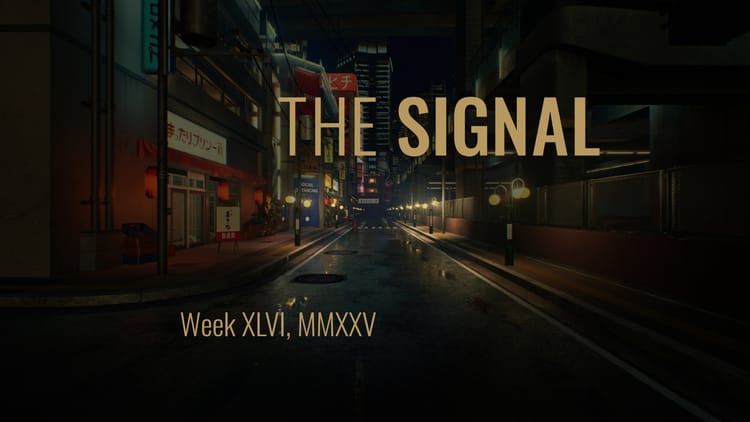There’s the handshake, then …

This week
- Israel and Hamas agree to a ceasefire—but disagree on whether the war has ended. What can you do with a peace framework when the two parties haven’t settled on what it means
- Washington finally enforces sanctions on Serbia’s Russian-owned oil company after eight delays. Can gradual pressure work on Belgrade when it hasn’t on Moscow?
- France’s prime minister returns from the dead. TikTok trains casual users to be compulsive scrollers. Hackers demand ransom for 800 companies’ data. Air-traffic controllers work without pay, airports go dark. & It turns out European lawmakers are full of forever chemicals.
- Why are American universities letting foreign governments bully their students? Sarah McLaughlin on the business model behind the pressure.
- Why does Japan have a new prime minister—again? Tobias S. Harris on political scandals, economic struggles, and a deep loss of public confidence in the country’s institutions.
- How is political upheaval in South Korea affecting North Korea? Soo Kim on what’s driving Pyongyang’s increasing hostility toward Seoul.
Weather report
- Two typhoons in days—what’s next for Southern Japan?
+ Cultural intelligence
- Why has theft become Uganda’s main system of government? Mahmood Mamdani’s new book, Slow Poison: Idi Amin, Yoweri Museveni, and the Making of the Ugandan State.
- Who actually listens to chamber music these days?
- & The week in new tracks.
Developments
October 4-10
The agreement
On Wednesday evening, October 8, U.S. Secretary of State Marco Rubio slipped President Donald Trump a note during a White House event. Trump read it, looked up, and told reporters: “We’re very close to a deal in the Middle East.” Hours later—at 2 a.m. Thursday in Egypt—Israeli and Hamas negotiators signed what Trump called “the first phase” of a peace framework. By Friday morning, the ceasefire took effect: Hostages would be released within 72 hours, Israeli forces would be pulling back, 2,000 Palestinian prisoners would be freed.
The immediate terms are concrete. What happens next not. Trump’s plan calls for Hamas to disarm completely. Hamas has publicly rejected disarmament. Israel’s Prime Minister Benjamin Netanyahu says the war continues until Hamas is destroyed. Hamas claims U.S. guarantees that “the war has ended permanently.” The plan envisions international governance leading to “Palestinian self-determination”—language Netanyahu compares to “giving al-Qaeda a state.” According to most recent reporting, substantive discussions on these core issues haven’t begun. Committees will address them only after phase one is complete.
What are they really agreeing to when they can’t say what happens next?
- What’s written, what’s not. Trump’s 20-point plan—the blueprint both sides say they’re working from—is explicit about phase one: ceasefire timeline, hostage numbers, prisoner categories, troop withdrawal to a “yellow line.” It’s far vaguer about what follows. On Hamas disarmament, it says this “will be part of the second phase,” with members who comply receiving amnesty. On governance, it proposes “a technocratic, apolitical Palestinian committee” supervised by an international board, but doesn’t specify who serves on either body or how authority transfers. On Palestinian statehood, it acknowledges “aspirations” without committing to a state or a timeline. The document both parties signed in Egypt covers only phase one. Substantive discussions on what comes next haven’t begun—committees will address later phases only after the initial exchange is complete.
- What each side says they agreed to. Hamas spokesman Khalil al-Hayya declared Thursday that the war has “fully and completely ended,” with U.S. officials and mediators providing guarantees. Netanyahu told his security cabinet the same day: “Hamas will be disarmed and Gaza will be demilitarized. This will happen either through the diplomatic path by the Trump plan or through the military path, but it will be achieved.” Hamas official Mahmoud Mardawi said the ceasefire “is not a favor from anyone, but rather the fruit of the legendary steadfastness of our people.” Trump called it “the first steps toward a Strong, Durable, and Everlasting Peace.” These descriptions don’t overlap—they present fundamentally different understandings of what’s been agreed to and what comes next.
- The sequence and what it creates. The framework requires Hamas to release its primary leverage—the hostages—before negotiations begin on the issues Hamas cares most about: disarmament, Israeli withdrawal, Gaza’s governance, Palestinian self-determination. Once the hostages are home, Israel’s main domestic constraint on military action disappears. Far-right ministers Bezalel Smotrich and Itamar Ben-Gvir oppose the deal but aren’t threatening to leave Netanyahu’s coalition right away—they’re waiting to see what happens after the hostages come home. If Netanyahu were committed to the framework’s later phases, his coalition would face an urgent crisis. The fact that it hasn’t suggests something about expectations for what happens once phase one is complete.
- Oslo’s precedent. The Oslo Accords in the 1990s created a phased process where both sides celebrated a breakthrough while deferring “final status” issues—borders, Jerusalem, refugees, statehood—to later negotiations. Those later negotiations never resolved the core questions. The structure allowed both sides to claim progress while preserving opposed visions of what peace required. Interim arrangements became permanent by default, with periodic violence erupting when the contradictions became unsustainable.
- The Minsk pattern. The Minsk agreements in 2014 and 2015 established ceasefires in eastern Ukraine while deferring questions about sovereignty and governance. Both sides signed, both sides claimed the other violated terms, fighting resumed each time. The agreements didn’t resolve the conflict, but they created periods of reduced violence and gave all parties something to point to diplomatically.
- Gaza’s recent history. Gaza specifically has seen this pattern multiple times. The January 2025 ceasefire—also involving hostage exchanges, also brokered by Egypt and Qatar, also with Israeli force repositioning—lasted eight weeks before Israel resumed operations when mediators couldn’t resolve differences over terms. The November 2023 truce lasted less than a week. In each case, the initial exchange happened but negotiations on fundamental questions stalled.
These frameworks tend to solve present crises while preserving each side’s interpretation of what comes next. Whether that represents diplomatic failure or diplomatic realism depends partly on what the alternative was, but mainly on how phase one affects the incentives that cover phase two.
So: Once the hostages are home and the immediate crisis is resolved, what incentive does anyone have to tackle the unresolved questions? Israel gets its citizens back and can tell its public that Hamas refused to disarm. Hamas gets prisoners released and can tell Palestinians it forced Israel to negotiate. Trump gets a ceasefire and a hostage release he can point to, regardless of what follows. If Netanyahu’s coalition demands resumed operations and Trump doesn’t push back, the framework becomes cover for exactly that. If Hamas uses the pause to regroup and Israel responds, both sides can claim the other violated terms. And if neither side wants blame for a collapse, the ceasefire could persist month after month, indefinitely deferring phase two—not peace, but not war either, with Hamas still in control and no resolution on any fundamental issue.
They’re agreeing, in other words, to a framework in which anything can happen. But after the last two years, there may be hope in that alone.

The squeeze
On October 9, American sanctions on Serbia’s Naftna Industrija Srbije—NIS for short—finally took effect. The company had been on the U.S. Treasury Department’s list since January, but Washington kept granting delays. Eight of them. Each time, Serbia asked for more time—90 days, 180 days, whatever might work. Each time, Treasury gave a brief extension, then let it expire. This time, the grace period ran out.
NIS is majority-owned by Russia’s Gazprom Neft and operates Serbia’s only oil refinery. Most of the country’s fuel comes from crude that Croatian pipeline operator JANAF transports from the Adriatic coast to the refinery in Pančevo. When the sanctions took effect, JANAF stopped deliveries. Serbia’s President Aleksandar Vučić went on television to warn of fuel shortages and price spikes. The company employs 13,000 people and contributes somewhere between 7 and 13 percent of Serbia’s budget revenues. Russia and Hungary offered support, but the immediate problem was more basic: Where does Serbia get oil now?
The sanctions target something specific—a European country still running on Russian energy infrastructure three and a half years into the Ukraine war. Serbia is the only state in the Western Balkans that hasn’t sanctioned Russia. Vučić cites energy dependence and historical ties. He’s also said Serbia “will not steal anyone’s property,” ruling out nationalization of NIS. Moscow, for its part, hasn’t shown interest in selling its stake to anyone Washington would approve.
So why sanction Serbia’s oil company now?
And what makes anyone think it’ll work?
- The pattern of delays and what ended it. Washington announced the sanctions in January as part of a broader U.S. effort to isolate Russian energy assets. What’s new is that Washington stopped granting extensions. For nine months, the pattern held: Serbia requested delays, Treasury gave 30 or 60 days, negotiations continued. Serbian officials tried restructuring NIS’s ownership: Gazprom transferred some shares to subsidiaries, and the Serbian government appointed a vice president to the board. None of it satisfied Treasury’s requirements. In late September, Vučić told reporters from New York that he saw no solution: “Whatever has been offered, the Russian side does not want to accept, and whatever has been proposed to delay the sanctions, the Americans do not accept.” A week later, Washington stopped the extensions.
- The leverage Washington is testing. Serbia wants to join the European Union. The country applied in 2009 and started negotiations in 2014. Serbia has condemned Russia’s invasion at the UN but refused to join sanctions, citing dependence on Russian gas and a new supply deal currently under negotiation. Vučić has tried to maintain relationships with both Brussels and Moscow, a posture he calls defending Serbia’s interests. The NIS sanctions test whether that position remains sustainable. If Serbia can’t get oil, it either finds non-Russian sources, nationalizes the refinery (which Vučić says he won’t do), or negotiates with Moscow to sell to a buyer Washington approves (which Moscow shows no interest in doing). The U.S. appears to be betting that energy pressure forces a choice.
- How sanctions worked—and didn’t—in the Ukraine war so far. Western sanctions on Russia’s economy haven’t stopped the war or collapsed the Russian state. They’ve done something else. Russia’s GDP growth looks strong on paper—4.4 percent in the second quarter of 2024—but that growth comes from massive state spending on the military, which now accounts for about a third of the budget. Inflation sits at 9 percent. The ruble is weak. Russia depends increasingly on China for exports and imports, a relationship Russian officials publicly resent. The sanctions function more like a drag than a knockout punch—keeping inflation high, constraining civilian industry, forcing dependence on a single major partner. They haven’t prevented Russia from prosecuting the war, but they’ve made doing so more expensive and less sustainable over time.
- The pattern with energy, specifically. Oil and gas have posed the most complicated challenge in the Western response. Europe initially tried to wean itself from Russian energy, but by May 2024, Russia became the largest supplier of natural gas to Europe again. The West attempted to cap Russian oil sales at $60 per barrel; Russia often nets close to market rates anyway, which have been between $75 and $85 for most of the year. Western governments balanced hurting Russia with not spiking energy prices that would hurt their own economies. That caution meant Western governments imposed sanctions on the oil sector slowly, incrementally, with carve-outs and delays. The NIS sanctions fit that pattern—Washington announced them in January, delayed them eight times, then implemented them in October.
- South Africa and Iran as reference points. Historical cases where energy and economic sanctions eventually worked took years or decades. South Africa faced escalating international sanctions from the 1960s through the 1980s before apartheid ended—and even then, the sanctions worked alongside internal resistance and changing geopolitical calculations. Iran has lived under various U.S. sanctions since 1979, with the most comprehensive sanctions starting in 2010 over its nuclear program. Those sanctions devastated Iran’s economy, cutting oil exports by more than half, but they didn’t force regime change or even full compliance on nuclear development; they brought Iran to negotiations. North Korea has survived under sanctions for decades without changing course. The record suggests sanctions can create economic pain and diplomatic pressure, but whether they change behavior depends on factors beyond just economic constraint.
- What makes this case different, maybe. Serbia isn’t Russia. It’s a country of 7 million people with EU-membership aspirations and an economy that can’t absorb the kind of pressure Russia can. The NIS sanctions don’t target Serbia’s entire economy—just its main source of oil. But that source is critical enough that losing it creates immediate practical problems: how to fuel transport, industry, heating. Serbia has reserves, but they don’t last indefinitely. The sanctions also come at a moment when Serbia finds itself caught between competing pressures: EU accession talks requiring alignment with European policy, energy dependence on Russia, and domestic politics where Vučić has built his position partly on resisting Western pressure to sanction Moscow. The squeeze may prove more effective on a smaller country with more to lose from isolation.
In the end, the test may not really be whether Serbia can withstand the pressure; it probably can’t—at least not indefinitely. It may be whether an incremental approach that hasn’t constrained Russia works differently on a smaller country with less room to maneuver. If energy sanctions force Serbia to choose between EU membership and Russian dependence, that might look like vindication of the approach. But it might also just mean the strategy works on countries too small to adapt the way Russia has. And if that were to be the lesson—that gradual pressure works on weaker targets but not stronger ones—then it’s not clear what that would teach Washington about constraining Moscow.

Meanwhile
- The 24-hour government. France’s Prime Minister Sébastien Lecornu resigned on Monday after naming his cabinet on Sunday evening—27 days into the job, less than a day after announcing ministers, before holding a single meeting. Both left and right condemned the lineup. … Stakes: How does France form a government without any coalition that can hold? … Since: Macron reappointed Lecornu on Friday, asking him to try again. The appointment follows days of talks where party leaders confirmed they oppose early elections but couldn’t agree on a stable coalition.
- Digital fentanyl. The Washington Post tracked 1,100 TikTok users over five months and found the algorithm systematically trains casual users into compulsive behavior—occasional users doubled their watch time without realizing it, opened the app more frequently, and swiped faster. … Stakes: Can you train a social-media algorithm, or does it train you?
- The consulting backdoor. Red Hat—IBM’s open-source enterprise-software company—confirmed hackers breached a GitLab instance used by its consulting division, accessing data from engagements with roughly 800 clients—including infrastructure blueprints, authentication tokens, and database credentials. … Stakes: What happens when consulting relationships start to mean serious risk exposure? … Since: Crimson Collective, the group claiming responsibility, joined forces with Scattered Lapsus$ Hunters and set an October 10 deadline for ransom payment. Today, as we send out the despatch.
- Burbank after dark. Hollywood Burbank Airport operated with zero air traffic controllers for five hours on Monday evening. Pilots had to contact San Diego for clearance. By Tuesday, Nashville imposed a ground stop, and delays spread to Chicago, Dallas, and Houston. … Stakes: What happens when critical infrastructure depends on impossible schedules and missing paychecks? … Since: The pattern continued through the week—by Tuesday evening, Nashville’s approach facility shut down for five hours, Chicago O’Hare was down controllers for nine hours, and ground delays averaged two hours. The union warned the system’s fragility was now “entirely visible.”
- Forever in the bloodstream. Twenty European Union lawmakers volunteered for blood tests to check for PFAS—the “forever chemicals" used in everything from nonstick pans to firefighting foam that accumulate in human bodies and don’t break down. All twenty tested positive. Tests found the chemicals—linked to cancer, immune system damage, and reproductive issues—in every participant at levels ranging from barely detectable to concerning, with the highest concentrations in those from countries with known contamination sites. The EU is debating restrictions on 10,000 PFAS compounds, but the chemicals are already in groundwater, soil, and bodies—all across the Continent.

+ Censors without borders
Why are American universities letting foreign governments bully their students? Sarah McLaughlin on the business model behind the pressure.







